3 novembre 2011
Asian Art in London 2011
Head of Manasa, the serpent goddess, Eastern India, Gupta period, early 6th century, Terracotta. Height: 30cm. John Eskenazi Ltd.
LONDON.- Since its inception in 1998, Asian Art in London has become one of the world’s most important focal points for international collectors of Asian art, with its series of specialist gallery exhibitions and vents hosted by leading UK dealers and auction houses. In a new move that further enhances its global appeal, Asian Art in London has for the first time invited overseas specialist dealers to join its ranks for the 2011 event, to be held from 3rd to 12th November.
International dealers taking part in Asian Art in London for the first time are: Art of the Past from New York; Alexis Renard and Christophe Hioco both from Paris; Carlo Cristi from Italy; Carlos Cruañas from Barcelona. From the Netherlands dealers welcomed are Dries Blitz, Michael Meijering Art Books and Vanderven & Vanderven Oriental Art. All international dealers will be taking gallery spaces in central London.
Also new to the event this year and adding a further dimension to the ever-expanding group of participants are several London-based dealers. Modern and contemporary Indian art can be found at Grosvenor Gallery, St. James’s; an exciting Chinese performance art piece will be taking place at Hua Gallery’s Battersea riverside location and Mica Gallery in Sloane Square will show modern Pakistani works.
Recently opened Japanese specialist Rutherston Bandini will present, as part of their exhibition, a delightful ivory netsuke of a Kinko on a carp, c.1780 from the Sheila M. Baker collection. Exquisite oriental carpets and textiles can be found at Zadah Gallery, Marylebone. This brings the total number of participants to 51 expanding the event by over 20% on previous years. A full list of all the participants, their exhibitions and specialities can be found below.
Asian Art in London’s sponsors this year are AFEX (Associated Foreign Exchange Brokers) and Apollo Magazine. The Antiques Trade Gazette also continues its invaluable support of the Asian Art in London Art Award for two- and three-dimensional works of art. The award is judged by an international group of experts, including Sir Michael Butler and the Victoria and Albert Museum’s Indian specialist Rosemary Crill, together with Dr Claire Pollard from the Ashmolean Museum and Dr Wang Tao, Senior Lecturer in Chinese Archaeology at SOAS.
The Asian Art in London Gala Party, to be held on the 8th November at the Victoria and Albert Museum, promises to be a spectacular event. The star prize for a lucky guest will be a fantastic free trip to The St. Regis Bangkok hotel sponsored by the St. Regis Group.
Visitors who come to London during the week have the opportunity to view some of the best Asian art in the world, from Imperial porcelain to contemporary, in gallery selling exhibitions and auctions, together with lectures and symposia by London’s major museums.
Asian Art in London, now in its 14th year, has an established reputation as one of the most important Asian art events on the international art calendar.
International dealers taking part in Asian Art in London for the first time are: Art of the Past from New York; Alexis Renard and Christophe Hioco both from Paris; Carlo Cristi from Italy; Carlos Cruañas from Barcelona. From the Netherlands dealers welcomed are Dries Blitz, Michael Meijering Art Books and Vanderven & Vanderven Oriental Art. All international dealers will be taking gallery spaces in central London.
Also new to the event this year and adding a further dimension to the ever-expanding group of participants are several London-based dealers. Modern and contemporary Indian art can be found at Grosvenor Gallery, St. James’s; an exciting Chinese performance art piece will be taking place at Hua Gallery’s Battersea riverside location and Mica Gallery in Sloane Square will show modern Pakistani works.
Recently opened Japanese specialist Rutherston Bandini will present, as part of their exhibition, a delightful ivory netsuke of a Kinko on a carp, c.1780 from the Sheila M. Baker collection. Exquisite oriental carpets and textiles can be found at Zadah Gallery, Marylebone. This brings the total number of participants to 51 expanding the event by over 20% on previous years. A full list of all the participants, their exhibitions and specialities can be found below.
Asian Art in London’s sponsors this year are AFEX (Associated Foreign Exchange Brokers) and Apollo Magazine. The Antiques Trade Gazette also continues its invaluable support of the Asian Art in London Art Award for two- and three-dimensional works of art. The award is judged by an international group of experts, including Sir Michael Butler and the Victoria and Albert Museum’s Indian specialist Rosemary Crill, together with Dr Claire Pollard from the Ashmolean Museum and Dr Wang Tao, Senior Lecturer in Chinese Archaeology at SOAS.
The Asian Art in London Gala Party, to be held on the 8th November at the Victoria and Albert Museum, promises to be a spectacular event. The star prize for a lucky guest will be a fantastic free trip to The St. Regis Bangkok hotel sponsored by the St. Regis Group.
Visitors who come to London during the week have the opportunity to view some of the best Asian art in the world, from Imperial porcelain to contemporary, in gallery selling exhibitions and auctions, together with lectures and symposia by London’s major museums.
Asian Art in London, now in its 14th year, has an established reputation as one of the most important Asian art events on the international art calendar.
An imperial yellow silk cushion of ruyi-head shape embroidered with lotus and peony blossoms on a trellis and leaf-filled ground, China, Qianlong period (1736-95). Height: 33cm. Jacqueline Simcox Ltd
Bi-Folium from a Shanameh Manuscript, Detail. Mughal, ca. 1590-1600. Opaque watercolor and ink heightened with gold on paper. Dimensions: 11 ¾ x 14 ½ inches (29.8 x 36.8 cm). Art of the Past
A Chinese jade carving of a lion dog and cub. Ming Dynasty 17th Century. Length: 5.7cm David Baker Oriental Art
A two-fold paper screen painted in ink and colour on a buff ground with a bijin (beauty) entering a room..Signed: Toyonao hitsu. (Painted by Toyonao). Seal: Toyonao no in. (The seal of Toyonao). Japan 18th century Edo period. Dimensions: H. 65” x W. 71” (164.5cm x 180cm). Gregg Baker Asian Art
Hunting scene (detail). Ink on paper. India, Kotah 19th century. Height: 24 5/8 in (62.5 cm). Width: 35 1/4 in (89.5 cm). Joost van den Bergh Ltd
A pair of Daoguang imperial coral ground bowls 1821-1850. Berwald Oriental Art
Japanese wood portrait sculpture of a Zen monk, 17th century CE. Height: 30 in (76.2 cm). Dries Blitz
A European Private Collection of important jade carvings, including an Imperial pale green jade brushpot, Qianlong mark and period; a rare and large carving of a Buddhist lion, 18th century; and a rare and large carving of a duck and young, 18th century. Estimates ranging from £100,000 - £250,000. Bonhams
A fine single-case lacquer inro. By Shibata Zeshin (1807-1891), Meiji Period. 7.9cm (3 1/8in). Estimate £60,000-80,000. Bonhams
Of rectangular form, bearing a dark olive green textured ground, lacquered with ripe chestnuts (kuri) splitting out of their husks, the design continuing on the reverse, where a single chestnut falls beneath a branch of Japanese nutmeg (kaya), in gold, silver and coloured takamakie, the interior of roiro, signed Zeshin; with lacquer hako-netsuke bearing a brown ground and lacquered in gold and shibuichi takamakie with a seated hare among wild flowers, signed Zeshin.
A very fine Imperial white jade 'Zi Qiang Bu Xi' seal . Qianlong. Dimensions: 4cm height, 4cm width, 4cm depth. Estimate on Request. Bonhams
The square seal surmounted by a superb openwork carving of a five-clawed dragon grasping with his claws onto the seal, his head raised and mouth open revealing the menacing fangs above the flaming pearl of wisdom amidst cloud scrolls, the scales on the writhing body defined by fine incisions, the square seal crisply carved with the characters Zi Qiang Bu Xi (Self-Strengthening Never Ceases), the stone of white tone with minor natural veining.
Provenance: a European private collection, purchased by the father of the present owner in the 1960s.
An article by Guo Fuxiang, Researcher, The Palace Museum, Department of Palace History, Beijing, will be featured in the catalogue.
Provenance: a European private collection, purchased by the father of the present owner in the 1960s.
An article by Guo Fuxiang, Researcher, The Palace Museum, Department of Palace History, Beijing, will be featured in the catalogue.
An extremely rare and fine cloisonné enamel model of a traditional go-ban (games board). By Honda Kozaburo of Nagoya, Meiji Period. 23cm x 41cm x 44cm (9in x 16 1/16in x 17 1/8in). It was sold for £216,000 including premium. Bonhams
The elegant go floor board is raised on four integral, low bulbous legs and finely worked entirely in silver and gold wire, the four sides alternating between ho-o roundels scattered among kiri-mon interweaved amongst karakusa and confronting butterfly roundels and kiku blossoms among karakusa reserved on a transparent ground flecked with aventurine, the playing surface with the intersecting lined grid finely rendered in gold wire, the underside similarly embellished with stylised foliate motifs on a mustard-yellow ground; the heso signed Dai Nippon Honda sei, with wood storage box.
Go (or Wei Qi as it is known in China) is considered by most Oriental game experts to be the world's greatest strategic skill game, far surpassing Chess in its complexity and scope. Of all the serious board games, go has the fewest rules and yet, the game itself is the most intellectually challenging. The mathematical elegance of the rules is complemented by the great beauty of the board, especially in Japan where it has been elevated to a pinnacle of aesthetic beauty.
The exceptionally fine condition and exquisite workmanship of this piece allow us to appreciate the remarkable technique and wide repertoire of the Japanese cloisonné enamel maker's craft and in particular, the aventurine ground which is specifically referred to by Brinkley in Artistic Japan at Chicago: A Description of Japanese Works of Art Sent to the World's Fair, Yokohama 1893, as a special characteristic of Honda's work. The artist's works are as highly sought after today as they were during his lifetime and extant signed works by Honda, particuarly of this extraordinary quality, are extremely rare.
Although go boards of ivory, wood and other materials are in abundant supply, a cloisonné enamel example of this superlative quality, as presented here, is hitherto unrecorded. This would therefore strongly suggest that it was either commissioned directly from the artist by a wealthy industrial family to present as a gift or that it was made for Bankoku Hakurankai (International Exhibition) entry.
Compare also with a go-ban which belonged to the Tokugawa Family, lacquered with maki-e patterns of tortoise-shell and aoi-mon crest, illustrated by Colin Mackenzie and Irving Finkel, Asian Games: the Art of Contest, Asia Society 2004, p.208, no.16:7.
A pair of famille verte dishes. 19th or 20th century. Each one of circular form decorated with a pair of Manchu/Chinese ladies beside a child holding a lotus branch. Diameter: 18.50 in (47 cm). Christie's South Kensington
Marble Fragment. China, Hebei province. 10 x 12 in (25.5 x 30.5 cm). Circa 5th / 6th century with Greek / Roman & central Asian influences. Brandt Asian Art
A white carved marble fragment of the lower part of a Buddhist figure. Depicting a pair of legs with bejeweled anklets and flowing overlapping robes, beneath silk tassels. The back, with further naturalistically rendered robes. The details boldly and powerfully designed.
A very rare carved rhinoceros horn 'hundred boys' stemcup. 17th century. Height: 3 1/2 in (8.9cm); £300,000-500,000. Important Rhinoceros Horn and Jade Carvings from a Distinguished European Collection Christie's
A pair of Chinese famille rose tapering vases. China, Yongzheng Period (1723-35). Height: 16.75 (42.55 cm). £15,000-20,000 Christie's South Kensington
Saraswati. Gilt bronze, Nepal, early 13th century. Height: 17.5cm/7inches. Carlo Cristi
Sakyamuni Buddha. West Tibet/West Nepal. Khasa Malla period. 13th-14th century. Height: 16.5cm. Carlos Cruanas

Huanghuali High Yoke-back Armchair, sichutouguanmaoyi. Late Ming - early Qing period, c. 1600 - 1700. Height: 119.0cm-Depth of seat: 47.5cm- Width of seat: 56.5cm. Eskenazi Ltd
Royal Mandala. Cambodia, Angkor Empire. Angkor Wat, mid 12th century. Bronze. Height 34 cm; diameter 28 cm. John Eskenazi Ltd
This bronze mandala presented by John Eskenazi Ltd is an enigmatic work of art. A group of eight identical figures, seated on a round platform surround a similar, larger individual elevated on a lotus plinth. Dating from a period of Southeast Asian history when political and religious responsibility were intrinsically joined, the iconography of this mandala cannot be easily ascribed to any known Hindu or Buddhist belief known to have existed within the court of Angkor. More likely, it represents royal authority, delegated to the principal officers of state, who were bound by oath of loyalty to the service of the king.
A mandala is visualised by throwing a rounded pebble into a pool of still water. The greatest surface effect is witnessed in the centre, with gradually lessening ripples of water emanating outwards. The visual image of the pebble hitting the water represents a cosmic idea that is deep rooted in South and Southeast Asian sensibility, pervading all aspects of religion and statecraft, as well as architecture, domestic life and every level of human self-awareness. Be it god, ruler or subject, the individual or landmark at the centre of the mandala is the source of energy whose influence radiates outwards, gradually diminishing in strength, the further it extends. In a mandala such as this exquisitely carved bronze, the purpose of the surrounding figures is to extend the central source of energy or influence further. In some mandalas, they face inwards, as if participating in some ritual. In others, such as this fine and important example, the figures face outwards, poised and ready to disseminate whatever message the central figure wishes to express, beyond the platform on which they sit to the profane or outer realm outside. The central figure holds a lotus in one hand, identifying his spiritual status, which in this instance is that of chakravartin rather than god. The eight figures around him each hold a lotus between their two hands, which are raised in namaskaramudra (respectful greeting) as they pay their respect to the central figure and convey his goodwill to the outside world.
An 18th Century lacquer writing box after Ogata Korin, the domed cover worked in gold and coloured taka-maki-e and inlaid in mother-of-pearl and pewter, with stylised hydrangeas and hibiscus, the interior of the cover decorated with plum blossom and rocks, the interior of the base with stylised rippling water, containing the original writing implements of two brushes and a knife. Length 25.5cm., width 23.2cm., height 10.2cm. Malcolm Fairley Ltd
Selection of Scholar’s objects on a scroll form stand.Fleurdelys Antiquités
Four Ladies in a Palace Courtyard. Family of Nainsukh. Guler or Kangra, India, c.1780-1785. 8.35 x 6.3 in (21.2 x 16 cm). Sam Fogg
Jamini Roy (1887-1972), Three Women. Gouache on paper, 30.3 x 11.81 in (77 x 40 cm). Oliver Forge and Brendan Lynch Ltd
Hunting Party. Amber artist in Mughal style, late 17th century. Francesca Galloway
A pair of 'famille-rose' 'soldier' vases and covers. Qing dynasty, Yongzheng period (1722-35). Height 138cm. Provenance: A Spanish noble family. Gibson Antiques Ltd
Qin Feng, West Wind East Water 078, 2005. Ink, coffee and tea on silk-and-cotton paper; 51.25 x 37 in (130.2 x 94 cm). Michael Goedhuis
Francis Newton Souza (1924-2002), Temple Dancer. Oil on board, 48 x 24 in (121.9 x 61 cm). Signed and dated top right. Grosvenor Gallery
Shiva Bhiksatana. Steatite. India, Karnataka region. Late 11th century. Height: 82 cm. Provenance: Private collection, Spain. Christophe Hioco
Untitled, 2009, Han Zhongren. Oil on canvas, 110cm x 110cm. Hua Gallery
Chenxiangmu (aloes wood) libation cup. China, Kangxi period, 1662 - 1722. Height: 4 inches, 10.1 cm. Width: 3 3/4 inches, 9.5 cm. Ben Janssens Oriental Art Ltd
An archaic bronze food vessel (yu). Chinese, late Shang-Western Zhou dynasty. Diameter: 10inches, 25.4cm. Roger Keverne Ltd
A yellow jade snuff bottle, 1720 - 1780. Height: 5.5cm. Robert Kleiner & Co. Ltd
Krishna Venugopala. Orissa circa 16th/17th century. Height: 7 3/4in (19.7cm). Jeremy Knowles
Imperial semi egg-shell wine cup, period of Kangxi, with hundred butterfly decoration. Marchant
Allah Teardrop. Swarovski crystal on slate. Dimensions: height 100cm, width 80cm. Mica Gallery Ltd
Qajar tile, Iran 2nd half 19th century. Moulded and painted in cobalt blue, turquoise, manganese and black with a trellis pattern filled with composite flower heads. 31cm wide, 33.5cm high. Amir Mohtashemi Ltd
An ivory netsuke of a recumbent boar by Masanao of Kyoto, its front legs resting on a branch of oak or chestnut leaves. It boasts an exaggerated snout reminiscent of a baku. The small lively eyes are of inlaid red buffalo horn. Signed in an oval reserve beneath the right haunch: Masanao. Kyoto, circa 1760. Length: 2 1/4 in (5.7 cm). Sydney L. Moss Ltd
A pair of ear plugs. Assam, 19th Century. Height: 3.5cm. Susan Ollemans
Fine Japanese silver and multimetal koro (incense burner) in the form of a hawk, mounted on a lacquer stand. Signed Tomonobu, 1898. Kevin Page Oriental Art Ltd
Document Box by Murayama Hisashi. Showa period, 1943. Gold, silver & coloured makie; 38.3 x 17.8 x 10.5 cm. Simon Pilling: East Asian Art & Interiors
A late Ming Fahua porcelain figure of Guanyin seated with two acolytes. Wanli period, late 16th century. Height: 8 in (20 cm). Nicholas Pitcher Oriental Art Ltd
An early Yaozhou pierced cupstand. Northern Song dynasty, 11th century. Diameter: 5 3/4 in (14.5cm). Priestley & Ferraro
Jade Ram’s Hilt Dagger (Khanjar). India (Mughal), circa 1650. Length of dagger: 32.6 cm. Length of hilt: 11.7 cm. Simon Ray Indian & Islamic Works of Art
A magnificent carved jade ram’s head dagger, the tapering watered steel single-edged blade with a gold damascened chape and cusped cartouches issuing down each side of the blade and filled with scrolling vine, the grey jade hilt with slightly flattened spine terminating in a fine and realistically rendered ram's head with features elegantly carved, the eyes inset with small rubies within gold mounts and the base lightly shaped for the fingers.
According to Stuart Cary Welch, a close look at the paintings of the Padshahnama reveals that the most common form of dagger worn during the reign of Shah Jahan (1627-1658) was the katar (thrust or push-dagger), followed closely by the khanjar. Of the khanjars depicted in the manuscript however, there are only very few examples with animal-head hilts and these are reserved for princes.
Provenance: The Collection of the Late Hon. Mrs Marten, O.B.E., D.L,
Crichel House, Wimborne, Dorset, acquired in the 1950s
Crichel House, Wimborne, Dorset, acquired in the 1950s
Safavid tile. Ceramic decorated in cuerda seca. Iran, XVIIth century; (22 x23 cm). Alexis Renard
Manjushri-Yamantaka. Tibet, c. 1000 AD. Copper alloy with gilding and pigment; 37 cm (14½ in). Rossi & Rossi Ltd
A crimson-pink chrysanthemum dish, Qianlong mark and period, from a private collection of monochrome porcelains. Sotheby's
‘Life of Buddha’ stone frieze, Pala, 10th century, India - height: 73 cm. A&J Speelman Ltd
4 Chinese Export Silver Mug. S&J Stodel
A box for tea ceremony utensils. Signed Shotei (Moriya Shotei). Circa 1910 ; 15.5 x 18 x 18 cm. Grace Tsumugi Fine Art Ltd
A very fine chabako, decorated with a black horse amongst ominaeshi (autumn plant with fine yellow flowers) and susuki (silver grasses) worked in black, red and gold lacquer on a red lacquer ground with dew drops in silver studs. The corners worked in gold lacquer with stylized scrolling motif on a black lacquer ground. Each side of the box with a pierced and shaped window, above a saddle shape black lacquer panel with further autumn grasses and silver studs. The interior of rich gyobu (lacquer with very high content of gold leaf).
Bronze Kneeling Monk. Burma, Mandalay Period, 19th Century H. 49cms, 19½ins. Jonathan Tucker Antonia Tozer Asian Art
Blue and White Temple Vase . Height: 82 cm. China, Jiajing period (1522-1566). Price on request. Vanderven & Vanderven Oriental Art
The vase is decorated around the neck with Tibetan Sanskrit characters in a calligraphic Chinese style. The central character, placed below three smaller characters, is a mantra -a sound chanted to promote concentration- pronounced as a Buddhist invocation 'Om'. the most famous mantra in Tibetan Buddhism, Om Mani Padme Hum, invokes the goddes Mahavidya. the shape and decoration on this vase suggest that it was made for ritual use.
A Rare Blue and White Apothecary Jar. Late Ming Dynasty. Chinese porcelain decorated in underglaze cobalt blue. Height: 16cm; Diameter: 9cm. Jorge Welsh Oriental Porcelain and Works of Art
A fine and large pair of Chinese Imperial cloisonné enamel and gilt bronze huluping or gourd-shaped vases. Qing dynasty, each with a six character Qianlong seal mark and of the period 1736-95, 47.2cm. From the collection of HRH Prince Arthur, 1st Duke of Connaught and Strathearn (1850-1942) and his daughter, Lady Patricia Ramsey (1886-1974). Est: £100,000 - 200,000. Woolley & Wallis
Ottoman Embroidery, from the Greek mainland, c1700. 210 x 126cm. Zadah
Japanese Kesi Tapestry. 193 x 131cm. Zadah
Chinese, Ningia rug fragment, 17th Century. Zadah
Publicité
Publicité
Commentaires

/https%3A%2F%2Fprofilepics.canalblog.com%2Fprofilepics%2F1%2F0%2F100183.jpg)
/https%3A%2F%2Fstorage.canalblog.com%2F03%2F02%2F119589%2F96711876_o.jpg)
/https%3A%2F%2Fstorage.canalblog.com%2F11%2F31%2F119589%2F94773502_o.jpg)
/https%3A%2F%2Fstorage.canalblog.com%2F20%2F83%2F119589%2F94772815_o.jpg)
/https%3A%2F%2Fstorage.canalblog.com%2F26%2F72%2F119589%2F75604929_o.jpg)
/https%3A%2F%2Fstorage.canalblog.com%2F59%2F60%2F119589%2F26458628_o.jpg)




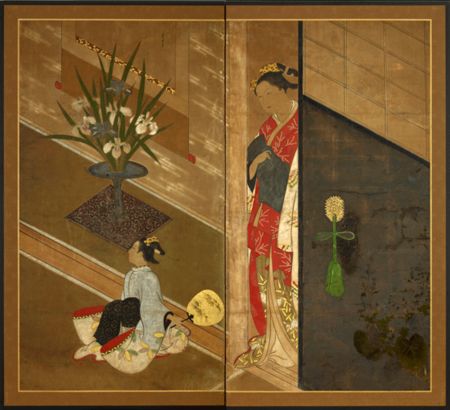


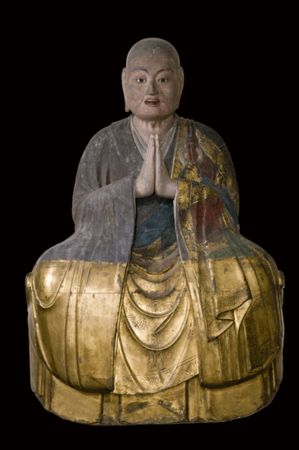











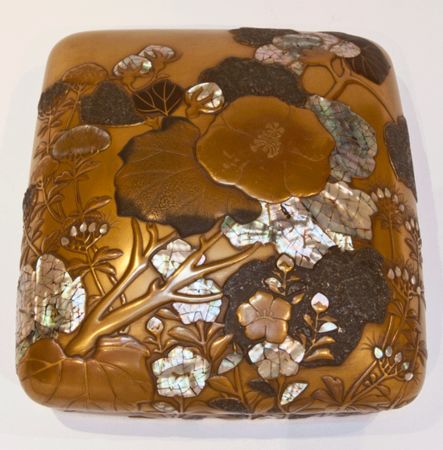














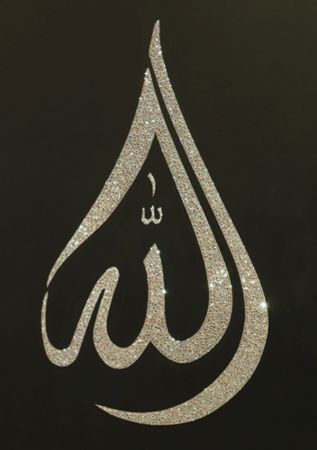


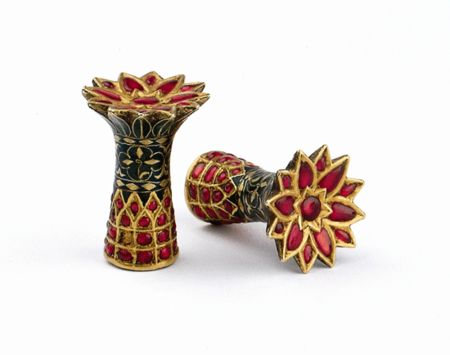





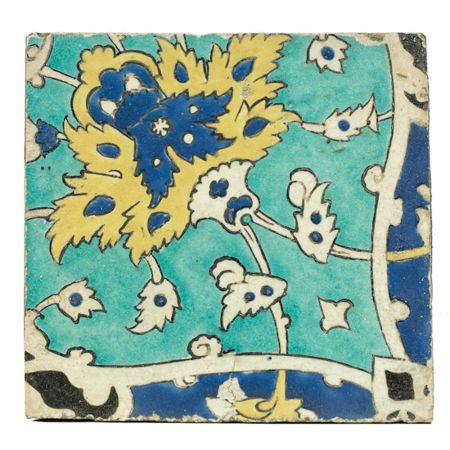



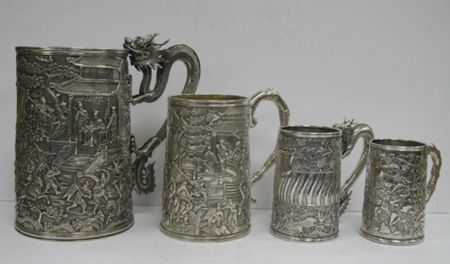




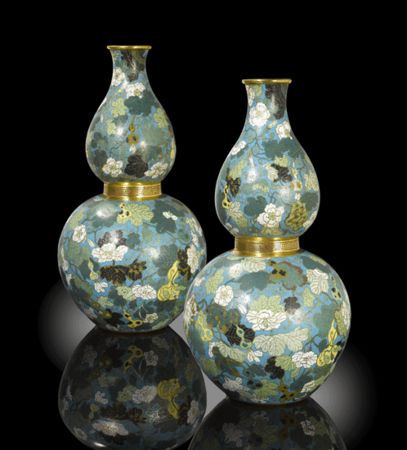





/image%2F1371349%2F20240425%2Fob_c453b7_439605604-1657274835042529-47869416345.jpg)
/image%2F1371349%2F20240425%2Fob_59c6f0_440358655-1657722021664477-71089985267.jpg)
/image%2F1371349%2F20240425%2Fob_07a28e_440353390-1657720444997968-29046181244.jpg)
/image%2F1371349%2F20240425%2Fob_0b83fb_440387817-1657715464998466-20094023921.jpg)